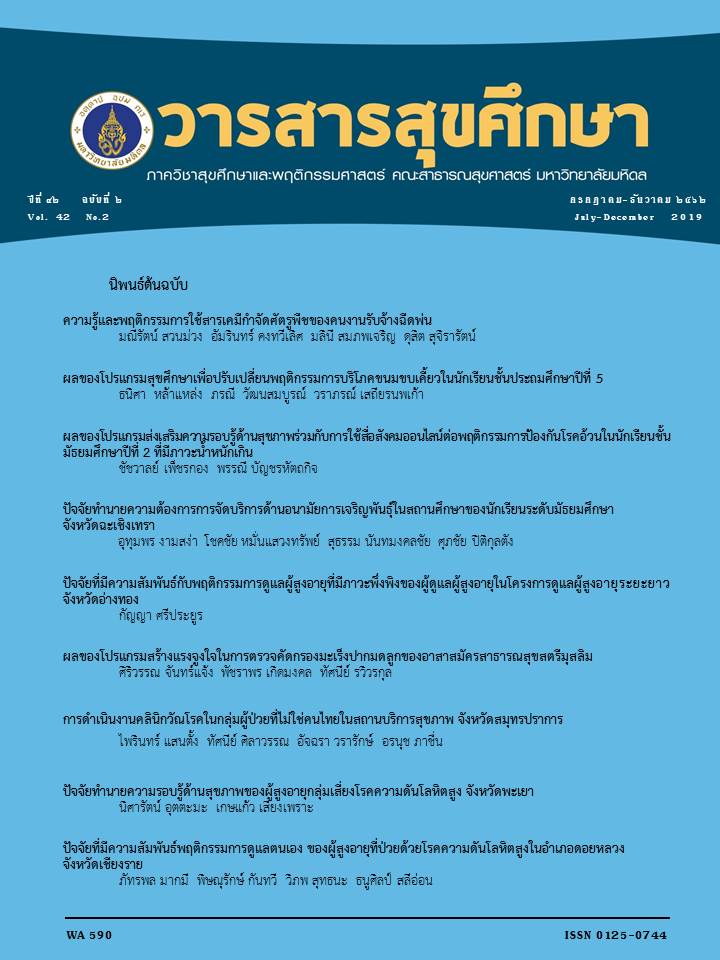Effects of Health Literacy Promoting Program with Social Media Used on Obesity Prevention Behavior among Overweight Mattayomsuksa 2 Students.
Main Article Content
Abstract
In Thailand, the prevalence of overweight and obesity among school children aged 7–14 years has dramatically increased. Obese children likely stay obese into adulthood and more risky develop to non-communicable diseases. Therefore, prevention of childhood obesity needs to do priority. A quasi-experimental study aimed to investigate effects of health literacy promoting program with social media that used on obesity prevention among overweight students. Volunteers were 68 junior high school students, divided into two groups; as experimental group and comparison group with 34 participants per group. A 12-weeks program was implemented with many activities such as lectures, coaching, games, role play, group process, discussion, demonstration and applied to use smartphone applications for daily calorie controlled including aerobics exercise. Social media were used such as Line group chat for communication and Facebook group for information support, assignment, sharing and discussion in group. The comparison group participated in regular tutor class. Data were collected before and after interventions by questionnaires and analyzed by descriptive statistics for general characteristics. Inferential statistics, paired-t test and independent-t test were applied for testing specific objectives. Statistical significance was set at p<0.05
The results showed that after interventions. The experimental group had higher mean score of health literacy for obesity prevention than those before intervention and higher than the comparison group significantly statistical (p<0.001). The mean score of food consumptions and exercise behavior for obesity prevention was higher than before intervention and higher than the comparison group statistical significance (p<0.001). After interventions, the experimental group had lower mean of body fat percentage than before intervention and lower than the comparison group statistical significance (p=0.001).

